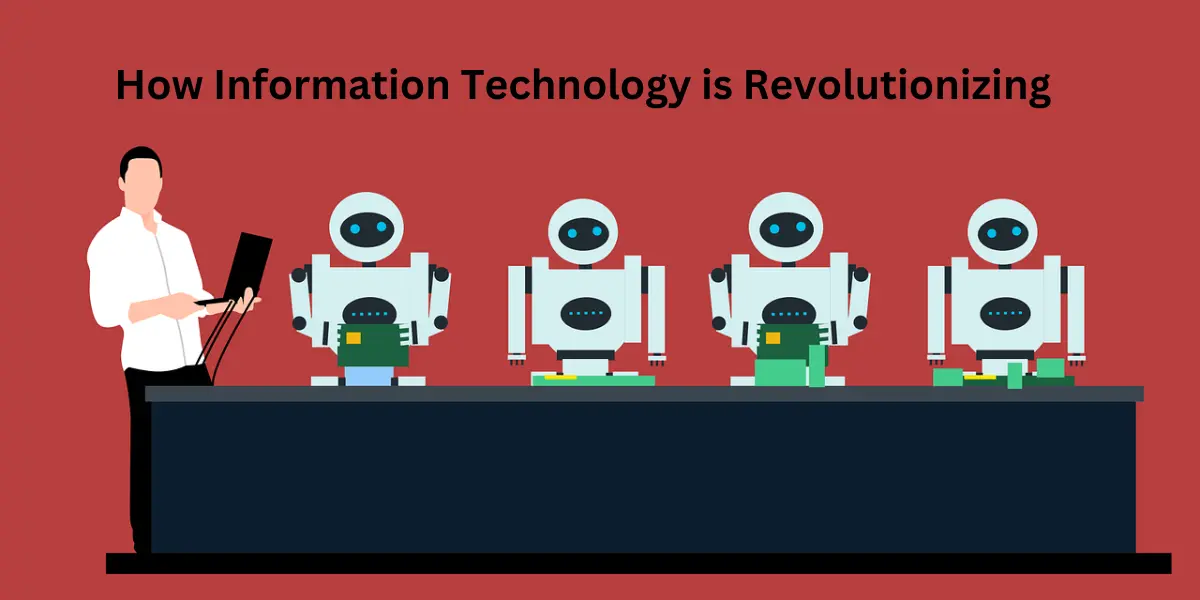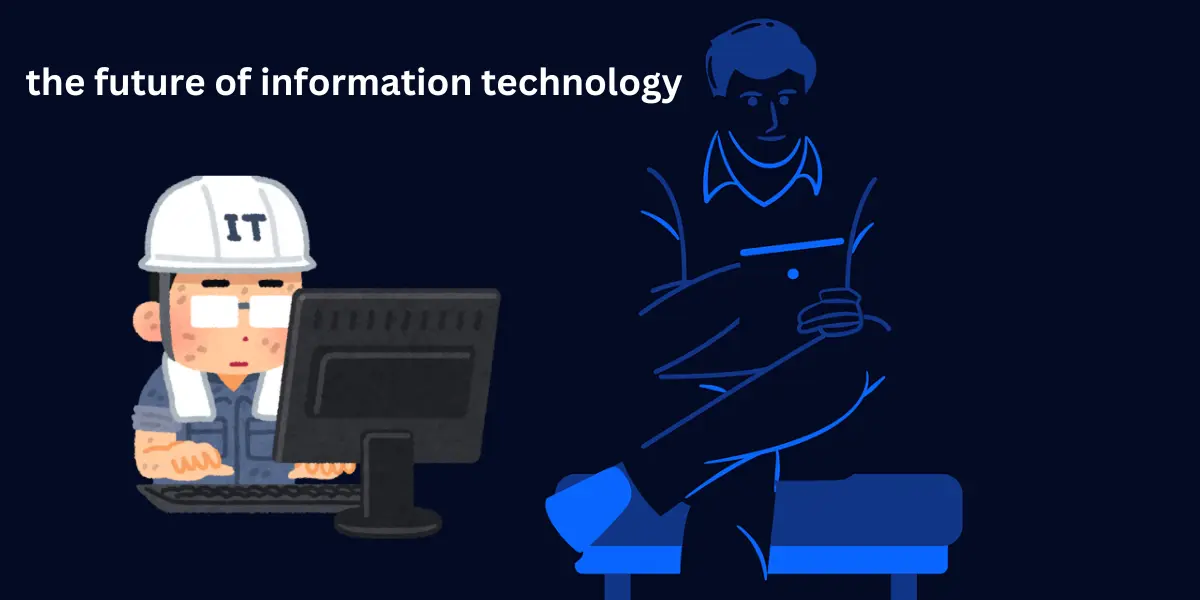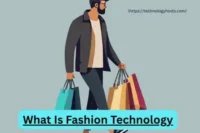How Information Technology is Revolutionizing Education
Published: 12 Dec 2024
In today’s fast-paced world, information technology (IT) is transforming every aspect of life, and education is no exception. From providing access to vast resources to enhancing teaching methods, IT has fundamentally reshaped how students learn and teachers teach.
This article explores the various ways information technology is revolutionizing education, making it more accessible, engaging, and personalized for learners of all ages. How Information Technology is Revolutionizing Education

Introduction:
The Impact of Information Technology on Education
Information technology has become a critical component of modern education. It has opened up new learning opportunities for students, while also enhancing the teaching process. Today, both teachers and students have access to tools that make learning more interactive, collaborative, and effective. Whether it’s through e-learning platforms, virtual classrooms, or personalized learning tools, IT is helping to bridge gaps in traditional educational systems.what is an information technology
As digital tools and resources become more embedded in classrooms, they provide educators and students with the ability to create, share, and access knowledge in innovative ways. Here’s how IT is making a lasting impact on education.
E-Learning and Online Education Platforms
One of the most profound changes brought about by IT in education is the rise of e-learning and online education platforms. In the past, education was confined to physical classrooms and textbooks. Today, platforms like Coursera, Udemy, and Khan Academy make it possible for anyone with an internet connection to access quality education, regardless of their location.
Flexible Learning:
E-learning platforms allow students to learn at their own pace and on their own schedule. This flexibility is especially helpful for working professionals or students in remote areas who may not have access to traditional classroom settings.Cloud Computing Explained
Wide Range of Courses:
Online platforms provide a vast range of courses in diverse subjects, from business to computer science to art. Learners can access courses from world-class institutions without the constraints of geography or cost. education revolution
Personalized Learning and Adaptive Technologies
Personalized learning is one of the most significant benefits of IT in education. Adaptive learning technologies use data and algorithms to customize learning experiences based on individual students’ needs and progress.
Tailored Content:
Platforms like DreamBox and Knewton use artificial intelligence to adjust lessons according to a student’s pace and performance. If a student struggles with a concept, the system can provide additional resources or alter the difficulty level to ensure understanding. How to Secure Your IoT Devices
Tracking Progress:
Teachers can track student progress in real time, identifying strengths and weaknesses. This allows for targeted interventions and support, making it easier to ensure that no student falls behind.
Engagement and Motivation:
Personalized learning keeps students engaged by offering content that aligns with their interests and skill levels. It allows for a more student-centric approach, where the learning process adapts to the individual rather than a one-size-fits-all approach.
Bridging the Digital Divide: Access for All
One of the most significant advantages of IT in education is its ability to bridge the digital divide and provide educational opportunities to underserved communities. While some regions still face challenges with internet access, initiatives to provide low-cost laptops and affordable internet are making education more accessible to all.
Affordable Devices and Internet Governments, non-profits, and tech companies are working together to provide students in remote areas with laptops and internet access, ensuring they have the tools they need to succeed in a digital world.
Global Reach IT allows students from different countries and backgrounds to learn together, overcoming geographical and social barriers. This democratization of education ensures that every learner, regardless of background or location, has access to the same opportunities.
Government Initiatives In many parts of the world, initiatives like One Laptop Per Child and Project Loon aim to provide technology and internet access to disadvantaged regions.Discover 5G Technology
The Future of IT in Education

Artificial Intelligence is revolutionizing education by enabling personalized learning experiences tailored to each student’s unique needs.
Adaptive Learning Systems:
AI-powered platforms like Knewton and Smart Sparrow analyze student data, such as learning pace and performance, to create customized lessons. Struggling students receive additional support, while advanced learners are challenged with new content. What is IoT (Internet of Things)
AI Tutors: Virtual tutors powered by AI can provide 24/7 assistance to students, answering questions and offering explanations in real time. These tools act as supplements to teachers, helping students grasp difficult concepts.
Data-Driven Insights: AI analyzes vast amounts of student data to identify learning patterns, predict outcomes, and suggest interventions for better results. Teachers can use these insights to improve their teaching methods.
Impact: AI ensures that every student gets personalized attention, fostering better engagement, understanding, and retention of knowledge.
- Virtual Reality (VR) and Augmented Reality (AR): Immersive Learning
Virtual Reality (VR) and Augmented Reality (AR) create immersive learning experiences that allow students to interact with concepts and environments like never before.
Virtual Classrooms:
VR allows students to “attend” classes in a 360-degree virtual environment, making remote learning more engaging. For example, VR platforms like Engage or AltspaceVR create lifelike virtual campuses for students.
Virtual Field Trips:
Instead of reading about historical landmarks or natural wonders, students can visit these locations virtually. For example, students can explore ancient Rome, the depths of the ocean, or even outer space
using VR headsets.
AR in Classrooms: Augmented reality overlays digital information onto the real world. Tools like Google Expeditions AR allow students to see 3D models of planets, human anatomy, or chemical reactions through mobile devices.
Enhancing Teacher Effectiveness with Technology
Technology is transforming how teachers approach their work, enabling them to deliver more engaging lessons, streamline administrative tasks, and provide personalized student support. From planning lessons to tracking student performance, technology empowers teachers to become more effective and efficient.
Streamlining Lesson Planning and Preparation
Gone are the days of static lesson plans. Technology provides tools that make planning lessons more dynamic and engaging.
Interactive Content Creation Tools: Platforms like Canva, Prezi, and Nearpod allow teachers to design visually appealing presentations, quizzes, and interactive lessons. These tools save time while providing a more immersive learning experience.
Lesson Repositories: Teachers can access vast libraries of pre-made lesson plans and resources through platforms like Teachers Pay Teachers and Kahoot. These repositories offer customizable templates, reducing preparation time.
Multimedia Integration: Technology allows teachers to include videos, animations, simulations, and other multimedia resources in their lessons. This helps cater to diverse learning styles and keeps students engaged.
Impact: Teachers can focus more on delivering quality education rather than spending excessive time on administrative preparation.
Automating Grading and Feedback
Grading assignments and providing feedback are essential but time-consuming tasks. Technology automates these processes, allowing teachers to devote more time to personalized interactions with students.
Automated Grading Tools: Platforms like Google Classroom, Edmodo, and Microsoft Teams offer automated grading features for quizzes and tests. Teachers can quickly evaluate multiple-choice questions, short answers, and even essays with AI-driven tools.
Instant Feedback: Students receive immediate feedback on their work, enabling them to understand their mistakes and improve faster. For example, tools like Turnitin not only check for plagiarism but also highlight areas for improvement in writing.
Data Visualization: Technology can present student performance in dashboards or charts, helping teachers quickly identify trends and gaps in understanding.
Impact: Automation reduces the workload on teachers and ensures students get timely, constructive feedback.
Personalized Support Through Data Insights
Technology equips teachers with the tools to analyze student performance and provide tailored support.
Learning Analytics: Platforms like Moodle and Canvas track student activity, including attendance, test scores, and engagement levels. This data helps teachers identify struggling students and intervene early.
Adaptive Learning Systems: Tools like DreamBox and Knewton offer personalized learning experiences based on student performance. Teachers can use these systems to monitor progress and adjust their teaching methods accordingly.
Individualized Learning Plans: By leveraging data insights, teachers can create personalized learning plans for each student, ensuring that they receive the support they need to succeed.
Example: A teacher might notice from analytics that a student consistently struggles with fractions. Using this data, the teacher can recommend specific exercises or one-on-one sessions to address the issue.
Increasing Student Engagement with Interactive Tools
Technology enables teachers to create lessons that actively engage students, transforming passive learners into active participants.
Gamification: Apps like Kahoot and Quizizz turn learning into a game, making lessons more enjoyable and interactive. Gamified quizzes and competitions encourage participation and reinforce key concepts. How Information Technology is Revolutionizing Education
Quiz: How Well Do You Know IT’s Role in Education?
Take this quick quiz to see how much you know about the impact of information technology in education. Can you score a perfect 10?
- What is one of the biggest benefits of virtual classrooms?
a) Reduced energy usage
b) Access to education from anywhere
c) Eliminating the need for teachers
d) Replacing textbooks entirely - Which of the following platforms is commonly used for virtual learning?
a) Canva
b) Google Classroom
c) Instagram
d) Photoshop - How do adaptive learning technologies personalize education?
a) By offering lessons based on student progress and needs
b) By limiting access to certain subjects
c) By automating test-taking
d) By using virtual reality exclusively - What is an example of a collaborative learning tool?
a) Microsoft Word
b) Google Docs
c) YouTube
d) Spotify - Which technology helps students experience immersive learning?
a) Virtual Reality (VR)
b) Cloud Computing
c) Blockchain
d) Antivirus Software - What’s one way IT helps teachers save time?
a) By automating grading and attendance tracking
b) By creating lesson plans automatically
c) By conducting parent-teacher meetings
d) By taking over classroom teaching entirely - How does IT help students in rural or remote areas?
a) By providing free transportation to schools
b) Through virtual classrooms and e-learning platforms
c) By reducing class sizes
d) By offering free school lunches - Which tool is commonly used for gamified learning?
a) Excel
b) Kahoot
c) LinkedIn
d) Trello - What is the role of blockchain in education?
a) To issue secure and verified digital certificates
b) To provide high-speed internet access
c) To replace teachers in classrooms
d) To create multimedia presentations - What is the main challenge of using IT in education?
a) Limited content availability
b) Cybersecurity risks and digital divide
c) Lack of interest from students
d) Excessive reliance on textbooks
Answers:
b) Access to education from anywhere
b) Google Classroom
a) By offering lessons based on student progress and needs
b) Google Docs
a) Virtual Reality (VR)
a) By automating grading and attendance tracking
b) Through virtual classrooms and e-learning platforms
b) Kahoot
a) To issue secure and verified digital certificates
b) Cybersecurity risks and digital divide
Information technology enhances learning by making it more interactive, accessible, and personalized. Tools like e-learning platforms allow students to learn at their own pace, virtual classrooms enable real-time collaboration, and adaptive technologies tailor lessons to individual needs. IT also provides access to vast educational resources, making learning more engaging and efficient.
IT empowers teachers by streamlining administrative tasks, such as grading and attendance tracking, and enabling the creation of engaging lessons using multimedia tools. Platforms like Google Classroom and Nearpod help teachers manage assignments and provide personalized feedback, while data analytics tools allow them to track student progress and adapt teaching methods to meet learners’ needs.
Proudly powered by WordPress






